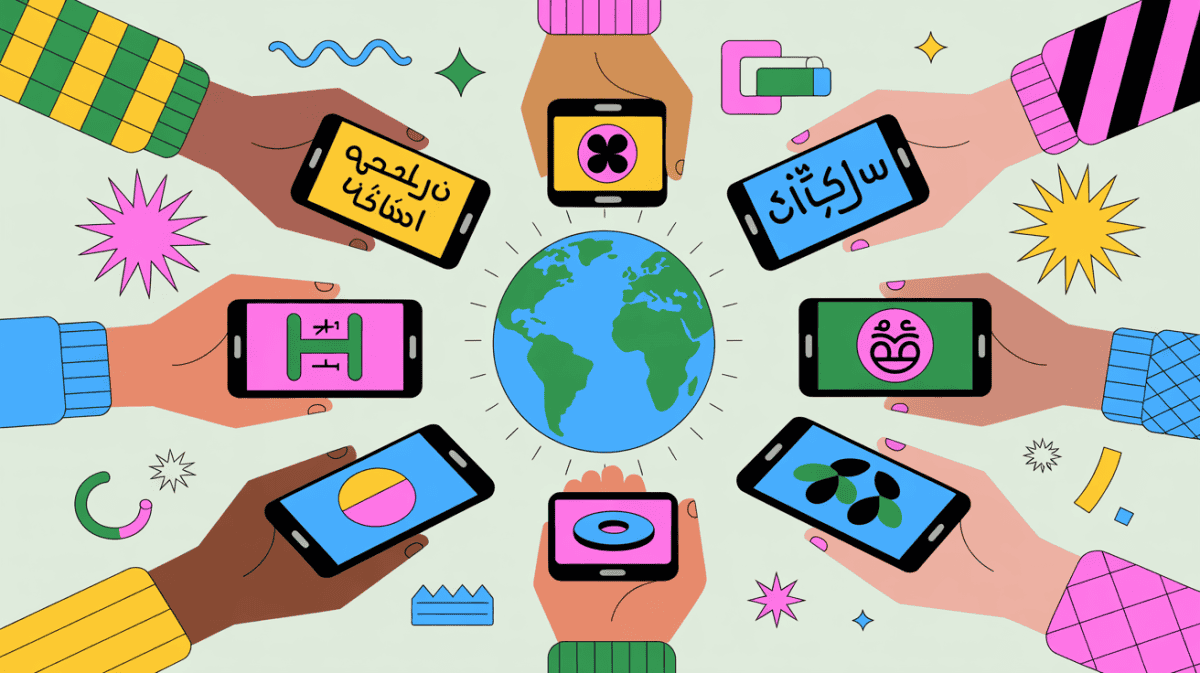Picture this: You’ve just launched your revolutionary app globally, confident that your sleek interface will win hearts worldwide. But within weeks, you’re flooded with user complaints from different regions—Asian users find your navigation confusing, Middle Eastern users struggle with text alignment, and European users feel overwhelmed by the information density. Welcome to the complex world of cross-cultural UX design, where one size definitely doesn’t fit all.
In our interconnected digital landscape, creating products that resonate across cultures isn’t just nice to have—it’s essential for survival. Cross-cultural UX design goes beyond simple translation; it’s about understanding how cultural values, behaviors, and expectations shape user interactions with technology.
Understanding Cultural Dimensions in Digital Design
Cultural differences run much deeper than language barriers. Hofstede’s cultural dimensions theory reveals how societies differ in power distance, individualism versus collectivism, uncertainty avoidance, and long-term orientation. These factors profoundly influence user expectations and behaviors.
For instance, users from high-context cultures (like Japan or Arab countries) often prefer interfaces rich in visual cues and implicit information, while those from low-context cultures (like Germany or Scandinavia) favor direct, explicit communication. This means your minimalist design that works perfectly in Silicon Valley might feel cold and incomplete in Tokyo.
The Hidden Challenges of Global UX Implementation
Implementing cross-cultural UX isn’t just about changing colors and fonts—it’s about reimagining entire user journeys. Consider these critical challenges:
Cognitive Load Variations: Users from different cultures process information differently. Western users often scan content in F-patterns, while Arabic users follow Z-patterns due to right-to-left reading habits. Chinese users, comfortable with dense information layouts, might find Western “clean” designs lacking in substance.
Trust Indicators: What builds trust varies dramatically across cultures. German users might trust minimalist, functional designs, while Chinese users often prefer feature-rich interfaces with social proof elements like user reviews and ratings prominently displayed.
Color Psychology: Colors carry different meanings across cultures. While red signifies danger in Western contexts, it represents luck and prosperity in Chinese culture. Your error messages in red might confuse Chinese users who associate the color with positive outcomes.
Research-Driven Approaches to Cultural Adaptation
Successful cross-cultural UX design starts with deep, localized user research. This goes beyond standard usability testing to include ethnographic studies, cultural immersion, and collaboration with local design teams.
Contextual Inquiry: Understanding users in their natural environments reveals cultural nuances that lab testing misses. How do users multitask? What social dynamics influence their decision-making? These insights are goldmines for cultural adaptation.
Cultural Probes: Deploy cultural probes—toolkits that help users document their daily interactions with technology. This method uncovers unconscious cultural behaviors that directly impact UX preferences.
Local Partnership: Work with local UX researchers and designers who understand cultural subtleties. Their insights prevent costly mistakes and ensure authentic cultural representation.
Design Patterns That Cross Cultural Boundaries
While cultural adaptation is crucial, certain design patterns transcend cultural boundaries:
Progressive Disclosure: Breaking complex information into digestible chunks works across cultures, though the optimal chunk size may vary.
Familiar Metaphors: Using culturally appropriate metaphors helps users understand new concepts. A “shopping cart” metaphor works globally, but the visual representation might need cultural adaptation.
Consistent Navigation: While navigation styles may vary, consistency within your chosen pattern builds user confidence across cultures.
Technology’s Role in Cultural Adaptation
Modern technology offers unprecedented opportunities for cultural customization:
AI-Powered Personalization: Machine learning algorithms can detect cultural preferences and adapt interfaces accordingly, creating personalized experiences that feel native to each user.
Dynamic Localization: Beyond static translations, dynamic localization adjusts content structure, imagery, and interaction patterns based on user location and cultural context.
Cultural Analytics: Advanced analytics tools help identify cultural patterns in user behavior, enabling data-driven cultural adaptations.
Building Cross-Cultural Design Teams
Creating culturally sensitive products requires diverse teams with varied cultural perspectives. This isn’t just about hiring internationally—it’s about fostering cultural intelligence within your design process.
Cultural Mentorship Programs: Pair designers with cultural mentors who can provide real-time feedback on cultural appropriateness and user expectations.
Immersive Cultural Training: Invest in cultural immersion experiences for your design team. Understanding cultural contexts firsthand dramatically improves design sensitivity.
Inclusive Design Reviews: Implement design review processes that specifically evaluate cultural sensitivity and appropriateness across target markets.
Measuring Success Across Cultures
Success metrics for cross-cultural UX design extend beyond traditional usability metrics:
Cultural Acceptance Rate: How quickly do users from different cultures adopt your product? Slow adoption might indicate cultural misalignment.
Engagement Patterns: Analyze how engagement patterns differ across cultures. High bounce rates in specific regions might signal cultural UX issues.
Localized Satisfaction Scores: Generic satisfaction surveys miss cultural nuances. Develop culturally appropriate feedback mechanisms for each target market.
The Future of Cross-Cultural UX
As our world becomes increasingly connected, cross-cultural UX design will only grow in importance. Emerging technologies like augmented reality and voice interfaces present new challenges and opportunities for cultural adaptation.
Voice Interface Culturalization: Voice assistants must understand not just languages but cultural communication styles, social hierarchies, and appropriate response patterns.
AR Cultural Overlays: Augmented reality can adapt visual information to cultural contexts in real-time, creating truly personalized cultural experiences.
Emotional AI: Future interfaces will recognize and respond to culturally-specific emotional expressions and expectations.
Conclusion
Cross-cultural UX design isn’t just about making products accessible—it’s about creating meaningful connections across cultures. In our globalized digital world, the companies that master cultural adaptation will build stronger user relationships, expand market reach, and create truly inclusive digital experiences.
The path forward requires empathy, research, and a willingness to challenge our design assumptions. By embracing cultural diversity as a design strength rather than a constraint, we can create digital products that feel genuinely native to users worldwide, regardless of their cultural background.
Remember: great UX isn’t just user-friendly—it’s culturally intelligent. In a world where your next user might be from anywhere, cultural sensitivity isn’t optional—it’s essential for creating products that truly connect with global audiences.


Leave a Reply